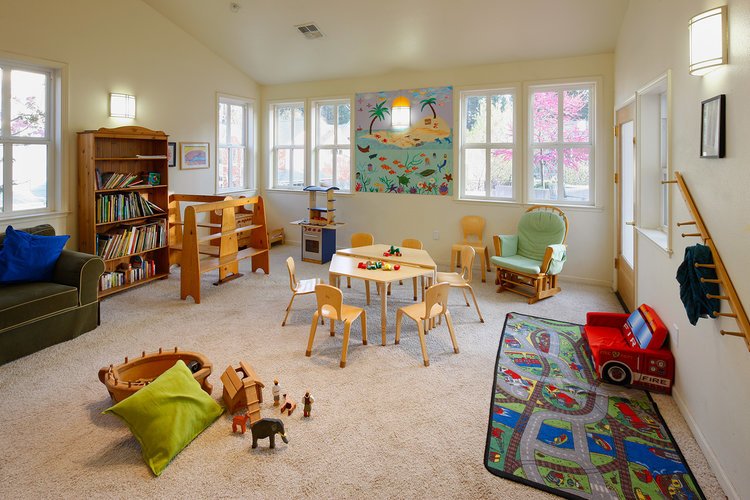what is cohousing?
noun, [ koh-hou-zing ]
Cohousing communities are thoughtfully designed neighborhoods with private homes arranged around a shared Common Area, fostering opportunities for meaningful social interaction among neighbors. What sets cohousing apart is that these communities are created and managed by the residents themselves, who prioritize a balanced blend of privacy and communal engagement. A defining feature of these communities is the practice of regularly sharing meals together in the Common House, which strengthens bonds and cultivates a sense of belonging. Sustainability and innovation are at the heart of cohousing, with residents collaborating to implement eco-friendly solutions and creative ideas that benefit both the community and the environment. These values naturally arise from the collective effort of individuals working together for the greater good, creating spaces where people can thrive both individually and collectively.
The history of North american cohousing
Though the word “cohousing” may be relatively new, it is not a new concept. It is simply the modern version of age-old community ideals where children were adored, elders looked up to, and neighbors knew and supported one another.
In 1985, Charles Durrett coined the term “cohousing” based on the Danish concept of bofællesskaber, which translates to "living communities." After dedicating years of research in Denmark, Charles Durrett, with Kathryn McCamant, introduced the concept to the United States with the seminal book Cohousing: A Contemporary Approach to Housing Ourselves. The latest edition now titled Creating Cohousing: Building Sustainable Communities plays a key role in initiating the global movement for the creation of cohousing communities.
In 1991, Durrett designed Muir Commons in Davis, CA becoming the first cohousing development in the United States. Since that time, Charles Durrett has written 16 books on cohousing and with his team at The Cohousing Company, has designed over 55 cohousing communities in North America. The Cohousing Company has worked with groups across the globe to create these high functioning neighborhoods and there are currently over 150 active and forming cohousing communities in the United States to date.
THE SIX CHARACTERISTICS of COHOUSING:
1. Collaborative: residents Develop, design, and organize together.
2. Shared spaces: Facilities that enrich daily life and supplement private homes.
3. Social: Promotes community interaction but maintains privacy.
4. Self-managed: Fully resident-managed.
5. Equal: No hierarchy in decision-making.
6. Independent: No shared economy.
In cohousing, decision-making is an important collective process. Residents come together to make important decisions that impact the community, ensuring that everyone's voice is heard and that choices are made with the collective well-being in mind. This collaborative approach strengthens the bonds between neighbors and fosters a sense of ownership and shared responsibility. At the same time, cohousing allows residents the freedom to withdraw into their private homes or backyards when needed, striking a balance between community engagement and personal space. This combination of shared decision-making and private retreat makes cohousing a unique and highly functional living model that supports both individual needs and collective harmony.
Cohousing stands apart from other shared housing or communal living models, such as communes and co-ops, due to its unique structure and principles. While these other models may share some similarities with cohousing, they are fundamentally different in how they are organized and function. Cohousing communities are intentionally designed to foster a strong sense of connection and collaboration among residents while also respecting individual privacy. One of the most defining features of cohousing is its architectural design, which is purposefully planned to encourage frequent interpersonal interactions while being accessible for every wheelchair or other necessity. Homes are typically arranged around shared spaces like a Common House, promoting spontaneous encounters and a sense of community while maintaining private homes to retreat in solitude.
“COHOUSING IS DESIGNED TO BE A HIGH-FUNCTIONING NEIGHBORHOOD.”
Cohousing inherently is lighter on the environment compared to traditional housing models. One of the key benefits is reduced energy consumption, as private homes are typically more compact and designed with energy-efficient heating and cooling systems. Many cohousing communities also opt for alternative energy sources, such as solar panels, which further reduce energy costs and promote sustainability. In fact, a recent study of 200 cohousing residents found that households saved up to $2,000 per year on energy costs. Water usage is also reduced when grey water filtration systems are utilized but also simply because of shared landscaping and community gardens. Residents also share lawn mowers, laundry facilities, tools, and more bringing down consumer costs, retail production, and even food waste.
Water usage is another area where cohousing communities excel in sustainability. By implementing grey water systems and sharing landscaping and community gardens, residents can significantly reduce individual water consumption. The shared responsibility of maintaining these communal spaces also fosters a more sustainable approach to water use. Additionally, cohousing encourages the sharing of over a hundred everyday items like lawnmowers, laundry facilities, tools, and common areas perceived as an extension of one’s own private house. This not only lowers consumer costs but also reduces the need for mass production of these goods, ultimately decreasing retail production and minimizing waste. The community-driven approach extends to food waste as well, as shared meals and gardens help reduce unnecessary food consumption and promote a more sustainable lifestyle for all. Through these practices, cohousing communities create a living environment that is not only more affordable but also kinder to the planet.
In addition, the cost and need for external care or support services—such as social services or in-home care—also decreases when the community is engaged in one another's lives. When neighbors care for each other, they can often offer the emotional and practical support that might otherwise require outside intervention. Simple acts like checking in on an elderly neighbor or helping a parent with childcare can alleviate the pressures that typically lead people to seek professional help. Consider the portion of county and municipal funding often allocated to services that could be more effectively and efficiently handled by neighbors or community members. For example, when a senior falls in their home and needs assistance getting back into bed, this is typically a service that could be provided by a nearby neighbor, reducing the need for formal interventions. Similarly, the cost of childcare for a parent attending an appointment or arranging transportation—like an Uber ride—could be alleviated if neighbors step in to help. By fostering a sense of community and encouraging neighbors to support one another, many of these essential services could be provided more affordably and with greater personal connection, allowing public resources to be redirected toward more critical needs. This not only strengthens community bonds but also reduces the strain on local governments, creating a more self-sufficient and supportive environment.




















